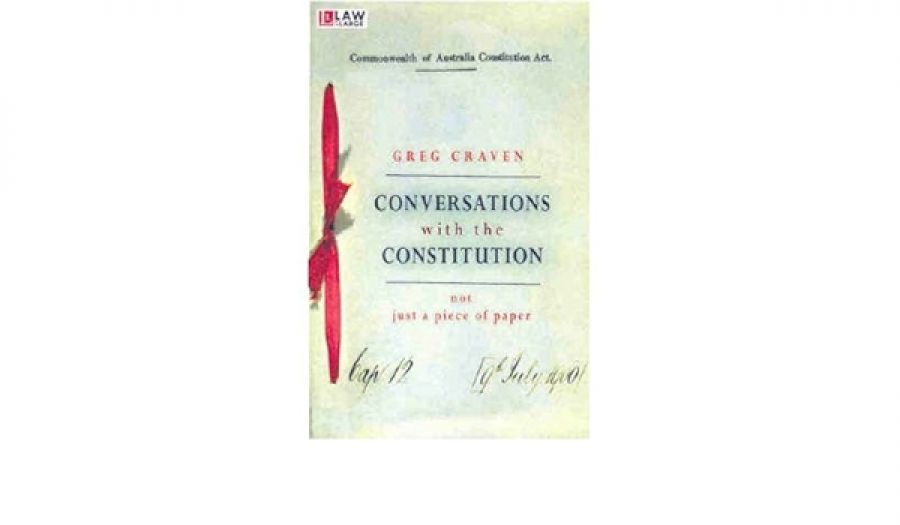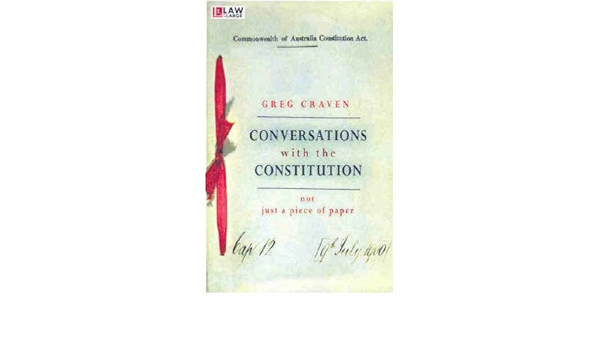
- Free Article: No
- Contents Category: Politics
- Review Article: Yes
- Article Title: Joining the Future
- Online Only: No
- Custom Highlight Text:
The Australian Constitution contains no aspirational statements of national possibility or sweeping vision of collective virtue, but the founders did not intend the Constitution’s meaning to remain fixed. It was to function as a prism of our national self-understanding, and its elaboration and development should aim, in the words of Alfred Deakin, to ‘enable the past to join the future, without undue collision and strife in the present’.Greg Craven, professor of Government and Constitutional Law at Curtin University, attempts to steer a delicate course: to rescue Australia’s founding document from irrelevance and scorn; and to preserve it from the impatient hands of reformists. Although he is more interested in demonstrating the Constitution’s resilience than in exploring in detail the contours of our constitutional democracy, Craven raises important questions about the legitimate roles of the judiciary and parliament, the future of federalism and the prospects for an Australian republic. He writes with zeal and obvious enthusiasm, and, while his rhetorical extravagance is often distracting, his discussion is never dull.
- Book 1 Title: Conversations With The Constitution
- Book 1 Subtitle: Not Just A Piece Of Paper
- Book 1 Biblio: UNSW Press, $34.95pb, 250pp
- Book 1 Cover Small (400 x 600):

- Book 1 Cover (800 x 1200):

Greg Craven, professor of Government and Constitutional Law at Curtin University, attempts to steer a delicate course: to rescue Australia’s founding document from irrelevance and scorn; and to preserve it from the impatient hands of reformists. Although he is more interested in demonstrating the Constitution’s resilience than in exploring in detail the contours of our constitutional democracy, Craven raises important questions about the legitimate roles of the judiciary and parliament, the future of federalism and the prospects for an Australian republic. He writes with zeal and obvious enthusiasm, and, while his rhetorical extravagance is often distracting, his discussion is never dull.
In a brisk chapter on our constitutional history, Craven seeks to demonstrate the democratic legitimacy of the Constitution’s establishment. He convincingly shows that the Australian experience was more democratic than is popularly imagined. Contrasted with the gnarled legalism of our Constitution, the US Constitution is usually lauded for its visionary appeal. It is often overlooked that in the US no public record exists of the constitutional deliberations. In Australia, the federal conventions were open to the public, and the debates were comprehensively transcribed. The Constitution was an exercise in ‘triple democracy’: legislation mandating the conventions was passed by popularly elected colonial parliaments; delegates to the convention were popularly elected; and the Constitution was adopted by referendum in every colony in Australia. ‘In the final analysis,’ notes Craven, ‘the moral authority of the Constitution rests not simply upon the fact that it is the law – even the basic law – but upon the reality that it is the only law of Australia made directly by the people themselves.’
Craven’s enthusiasm for this moral imprimatur, and his respect for the founders’ toil and vision, informs and overwhelms his subsequent elaboration of the Constitution’s contemporary relevance. For too long, Craven suggests, our Constitution has been viewed as an instrument of colonialist oppression, an arid but insidious husk of unwieldy and anachronistic rules. Craven’s simplification of the debate frequently veers towards caricature. He contrasts the prudence of ‘old constitutionalists’ with the impatience of those clamouring for the inclusion of a Bill of Rights. ‘New constitutionalists’ ridicule parliament as moribund, unable to safeguard the rights of minorities, and favour the installation of the judiciary, benevolent philosopher kings, at the apex of our constitutional structure. They see the Constitution not as a founding obelisk radiating authority but as a locus of social forces, to be kneaded and massaged into postmodern posture.
It is this trend which apparently blights the landscape painted by our founders and which arouses Craven’s ire. Judicial activism, with its open appeal to human rights and community values, and its supposed denigration of the Constitution’s history, threatens to torch the fragile architecture of parliamentary democracy and the conventions of Westminster government. Craven’s defence of a sombre institutional competence – the judge mechanically applying rules, the politician deciding policy – basks in an uncomplicated faith in majoritarian democracy. Its considerable shortcomings notwithstanding, the Westminster traditions have flourished on Australian soil, and Craven puts considerable store in the ability of parliamentary convention to adapt to changing circumstances. But his discussion of the challenges to these conventions – the decline of ministerial responsibility and the dominance of party government, an increasingly politicised government bureaucracy that covets secrecy, and an executive that evades accountability – raises profound questions about the efficacy of responsible government.
In a highly politicised atmosphere, the judiciary has had to grapple with the importance of fundamental freedoms to our constitutional structure, and to consider the executive’s compliance with the rule of law. It is a pity that Craven does not discuss some of the more recent examples, particularly in relation to refugee law. The centrality of parliament to his positivist vision of democracy impels him towards a claustrophobic understanding of the judicial task of interpretation. Prosaic complaints against the judiciary stack up with leaden monotony: judges are not elected, while politicians are; judges are out of touch with suburban Australia; lawyers’ minds are tuned to the abstract and arcane, and are ill-suited to questions of policy.
Craven assumes that the Constitution’s text is capable of precise explication, and he appears to believe that the founders provided for every contingency in exhaustive terms. Change was to occur by formal referendum, not by interpretation. ‘The idea that the founders spent eight years, forests of paper and baskets of sweat to produce a Constitution that is merely a broad hint to the High Court,’ he grumbles in a typical passage, ‘resembles the self-refuting puffery of television investment advisers.’ But if the Constitution is indeed more than a ‘broad hint’, it is not a compendium of answers, and the founders did not intend it to be sandpaper rubbing against the inevitable development of Australian society. In Andrew Inglis Clark’s words, it is a ‘living force’, an instrument of human possibility, obtaining its layers of sophistication through judicial elaboration. If we forget this, the heritage and relevance of our Constitution are endangered by atrophy, not evolution.


Comments powered by CComment